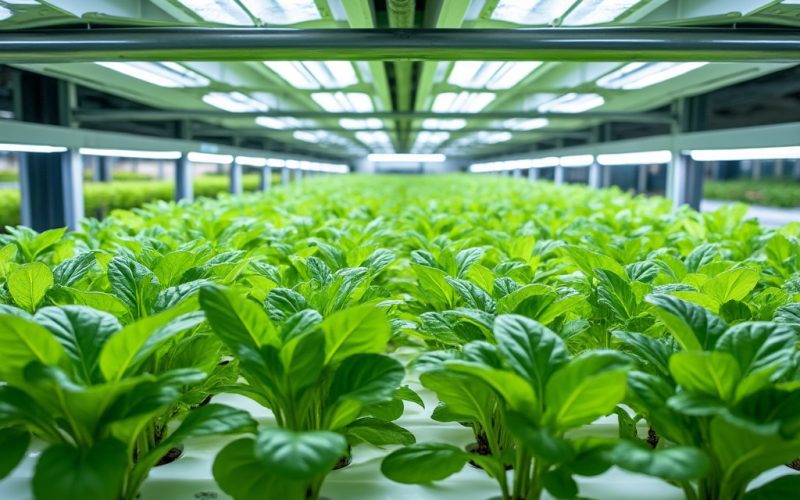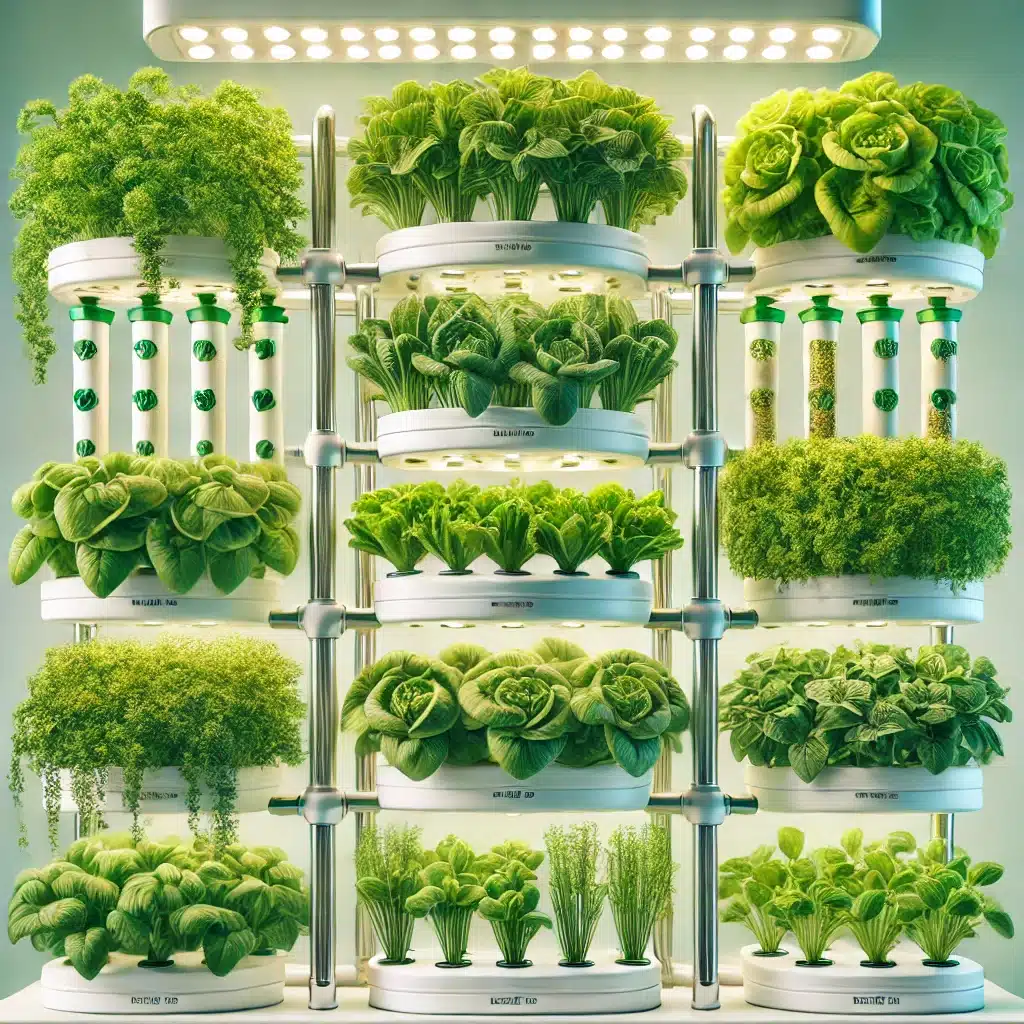
Hydroponics, an innovative approach to agriculture, is transforming how we grow crops. By cultivating plants without soil and delivering nutrients through a water-based solution, hydroponics meets the rising demands for efficient, sustainable farming. With the hydroponics technologies market valued at USD 5.00 billion in 2023 and projected to grow at a 12.4% compound annual growth rate (CAGR) through 2030, hydroponics is not just a trend but a cornerstone of modern agriculture.
This article explores the fundamentals of hydroponics, its workings, its advantages and disadvantages, market trends, the sustainability factor, and insights into the taste of hydroponically grown produce. Whether you’re an agricultural expert, an investor, or a curious consumer, this guide provides all the details you need.
What is Hydroponics?
Hydroponics is a method of growing plants without soil, where essential nutrients are provided directly through a water-based solution. The roots absorb nutrients from the solution, allowing controlled, accelerated growth in a soilless environment. Hydroponic systems typically use containers, tanks, or specialized setups that house the plants in nutrient-rich water, promoting rapid growth and optimal yield.
Hydroponics has two primary system categories:
- Aggregate Systems: Utilize inert media like perlite, rock wool, or coconut coir to support plant roots.
- Liquid Systems: Deliver nutrients directly through a nutrient solution that circulates around plant roots, with examples including Deep Water Culture (DWC) and Nutrient Film Technique (NFT).
How Hydroponics Works

The success of hydroponic farming lies in its precision and control over growth conditions. Key components in a hydroponic system include:
- Nutrient Solution: Plants receive a carefully balanced solution with essential nutrients like nitrogen, potassium, and phosphorus. This tailored nutrient supply is adjusted according to each plant’s growth phase, ensuring optimal results.
- Lighting: Often, hydroponic setups use artificial LED lighting, allowing year-round growth and maximizing photosynthesis, particularly in indoor setups or urban farms.
- Environmental Control: By managing variables like temperature, humidity, and light intensity, hydroponics eliminates seasonal limitations, supporting consistent growth and yield.
Some popular hydroponic crops include leafy greens (lettuce, kale), herbs (basil, mint), and fruits like strawberries and tomatoes. These crops thrive in hydroponic systems and can even surpass soil-grown produce in yield and quality.
The Market Demand for Hydroponics
With its immense potential, hydroponics is expanding rapidly worldwide. The North American market leads in adoption, with the U.S. valued at USD 506.25 million in 2023, projected to grow at a CAGR of 10.7%. Europe, with its established hydroponics infrastructure, is another key player, especially due to the demand for pesticide-free produce and controlled farming environments.
In the Asia-Pacific region, hydroponics is expected to grow faster than anywhere else, fueled by urbanization, population growth, and awareness of sustainable farming. With its ability to use less land and water, hydroponics is emerging as a viable solution to address the challenges of feeding growing populations in urbanized areas.
Sustainable Benefits of Hydroponics
Hydroponics stands out for its sustainable elements, addressing critical challenges like water scarcity, land availability, and chemical use. Here’s how:
- Water Conservation: Hydroponics uses up to 90% less water than traditional farming, recycling almost all of it within the system. This makes it an ideal solution for water-scarce regions or urban areas with limited resources.
- Example: Hydroponic systems can grow lettuce with only 10% of the water used in conventional methods, according to a report from the United Nations.
- Space Efficiency: Hydroponic systems can be set up vertically or in compact spaces, maximizing crop output per square foot. This feature is critical for urban agriculture, allowing food production close to consumers.
- Example: AeroFarms in New Jersey employs vertical farming to yield 390 times more per square foot than traditional farms.
- Reduction in Pesticides: Indoor hydroponic farms avoid many soil-borne pests, reducing the need for pesticides and herbicides. This produces cleaner, safer food and minimizes environmental impact.
- Lower Carbon Footprint: By producing crops closer to urban centers, hydroponics reduces the carbon emissions associated with transportation and food miles, making it more eco-friendly than conventional agriculture.
- Efficient Nutrient Use: Hydroponics delivers nutrients directly to plants, reducing nutrient runoff and preventing pollution of water sources—a common issue in traditional farming.
- Energy Potential: Some hydroponic farms are experimenting with renewable energy sources like solar power to offset energy demands, particularly for lighting and water pumps.
Advantages and Disadvantages of Hydroponic Farming
Advantages
- Consistent Yield and Quality: Hydroponics allows year-round growth, producing consistent yields and high-quality produce regardless of season.
- Faster Growth Rates: The direct nutrient delivery in hydroponics accelerates plant growth, with crops like basil growing up to 25% faster than in soil.
- Space and Water Efficiency: Hydroponic systems optimize both space and water, making it ideal for urban farming and drought-prone regions.
Disadvantages
- High Initial Costs: Setting up a hydroponic system requires significant upfront investment, with commercial setups costing between USD 100,000 and USD 500,000.
- Technical Expertise: Hydroponics requires a knowledge base in plant biology and system management, which can be challenging for those unfamiliar with controlled agriculture.
- System Vulnerability: Hydroponic setups rely on consistent power and monitoring. Power outages or pump failures can quickly impact plant health.
Taste and Quality of Hydroponic Crops
Hydroponically grown produce is comparable in taste to soil-grown crops, and in some cases, the controlled environment can even enhance flavor consistency and sweetness.
- Leafy Greens and Herbs: Lettuce and basil from hydroponic systems tend to be crisp and fresh, often tasting slightly milder and more consistent due to the stress-free growing conditions.
- Tomatoes and Strawberries: These fruits can have a sweeter profile in hydroponic systems, as growers can fine-tune nutrient levels for optimal sugar production.
Studies show that most consumers cannot distinguish between hydroponic and soil-grown produce, and some even prefer the consistency and flavor of hydroponically grown food.
Future Outlook
With advancements in IoT, AI, and data analytics, the efficiency of hydroponic systems is set to improve, lowering costs and expanding accessibility. Additionally, government incentives supporting sustainable agriculture are likely to drive further growth in hydroponics adoption worldwide. As technology progresses, hydroponics is poised to become an essential part of our food production system, providing fresh, local produce with minimal environmental impact.
FAQ
What is hydroponics?
Hydroponics is a method of growing plants without soil, using a nutrient-rich water solution to provide essential nutrients directly to plant roots.
How does hydroponics work?
In hydroponics, plants grow in a controlled environment with tailored lighting, nutrient solutions, and temperature management, allowing optimal growth conditions and efficient resource use.
What crops can be grown with hydroponics?
Hydroponics works well for leafy greens (lettuce, kale), herbs (basil, mint), and certain fruits like strawberries and tomatoes.
Is hydroponic farming sustainable?
Yes, hydroponics is highly sustainable, conserving up to 90% of water compared to traditional farming, reducing pesticide use, and enabling local production to lower transportation emissions.
Does hydroponically grown produce taste different?
Most hydroponic produce tastes similar to or even better than soil-grown crops, with consistent flavor and quality thanks to the controlled growing environment.
What are the main disadvantages of hydroponics?
Hydroponic systems have high initial setup costs, require technical expertise, and are vulnerable to power outages or equipment failures.
What is the future of hydroponics?
As technology advances, hydroponics is expected to become more efficient and accessible, playing a key role in sustainable urban agriculture and food security.
